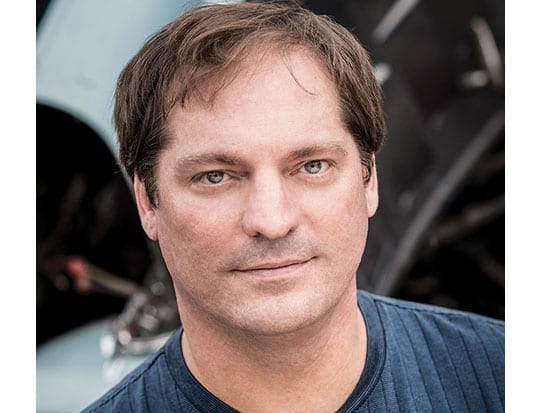Effective solutions for technicians on both sides of the border.
Donny Seyfer is a renowned automotive service technician, trainer and technical instructor in the field of automotive service repair.
He co-owns Seyfer Automotive, a service and repair facility in Wheat Ridge, Colo. and is also the current Executive Officer for the National Automotive Service Task Force (NASTF) as well as a past chair of the Automotive Service Association.
He has provided instruction and training for numerous industry organizations ranging from ASA and ATE to NAPA Autotech, The Auto Alliance, WORLDPAC, NACE and CARS.
With the Automotive Aftermarket Retailers of Ontario (AARO) choosing to forge closer ties with NASTF to provide faster and easier access to repair information as part of the Right to Repair 2020 initiative, CarCare Business had the opportunity to ask Seyfer about some of the challenges facing technicians today when it comes to service repair information, vehicle security programs and being able to fix the vehicle right the first time. Here’s what he had to say.
Tell us a little about your background. How did you first get involved in this industry?
I grew up in this industry but in my teens, I decided to become a professional guitar player. It was fun, but tough to make a living. In 1989 I decided to switch gears and join automotive service repair full-time.
What are some of the biggest changes you’ve seen when it comes to actually repairing vehicles in the last three decades?
When I first started, we were still dealing with points, condensers and carburetors in a lot of cases. You could diagnose a problem often by just listening to the engine. It was mostly mechanical. Today we are largely dealing with electronics. The mechanical aspect has improved a great deal but it’s often the software that governs it where the problems lie.
Can you expand on this a bit?
As a technician today, you really need to be thinking about the mechanical components and how the electronics interact with them. The main issue today is how to go about the diagnostics process because there are so many modules on the vehicle and the OBD II system controls all of it. Even on my little Ford Fiesta which I park the airport; when the windshield washers wouldn’t work and the issue turned out to be a bad fuse, the diagnostic process still started by plugging in a scan tool to the OBD II port.
Would it be fair to say that technician mindset is a big part of working effectively in this new age of technology?
Most definitely. I think that is probably the biggest challenge we have today. When I look at that caveat from a teaching standpoint and classes on subjects like advanced driver assistance systems and cyber security diagnostics, it was tough in the beginning and people said it would never catch on. Today the rooms are packed and people want to know this information.
Do you still run into issues with technicians believing they don’t need to learn anymore?
In general terms there seems to be two camps. Firstly, there’s the older guys that are looking to get out of the industry and aren’t really interested. Secondly, you have the young guys who are excited about working on something more sophisticated and honing their craft. The main thing is to show the value in what you’re doing and that by teaching this information the benefits it will bring. I’ve spent a lot of time researching how the human brain functions and its learning patterns. If people don’t continue to use their neural pathways to learn new things, eventually those pathways will break and it becomes much harder to reconnect them and start learning again. I’ve seen real examples, including a tech that was once at the top of his game but stopped going to training and felt he didn’t really need to learn anymore. As a result, his ability and his skills started falling off. I think it’s important for shop owners to remember that when it comes to your mind and learning, there really is no holding process, you’re either moving forward or you’re falling behind.
Can you tell us a little about your relationship with NASTF and what you’re looking to accomplish moving forward?
NASTF was founded in 2000 with the goal of connecting the dots when it comes to missing service repair information. I’ve been involved since the beginning, as a supporter, on the board of directors and now as Executive Officer. The board asked me to take the Executive Officer position on an interim basis when the previous gentleman retired. They later offered me the job on a permanent basis and I decided to take it. Our mission is still the same as it was in the beginning, addressing gaps when it comes to service repair information and doing it in a socially, friendly way as a community.
Do you see government as having a role to play in providing a level playing field when it comes to service repair information?
The trouble with trying to introduce legislation in a subject area like this, is that it’s often outdated before it even hits the street. Additionally, in order to create and enforce it you will need people to take on extra responsibility and hours after their day jobs to do it and it can be hard to get that commitment because the people doing it are already over tasked.
Do you see any significant differences between Canada and the U.S. when it comes to accessing service and repair information?
I think there are many similarities between Canada and the U.S. when it comes to vehicles, and the market is very integrated between both countries. You have U.S. market vehicles built in Canadian assembly plants and vice versa, so a lot of the repair information is the same. Where we do see differences are demographics and population density. Because Canada has a much lower population spread out across greater distances, dealers tend to be more territorial and protective because service departments and independents are competing for a smaller pool of customers.
Can you tell us a little about the relationship NASTF has forged with AARO in Ontario and what we’re likely to see from it?
Our goal is to provide access to repair and service information on both sides of the border. Since day one, NASTF has been focused on providing information access for technicians in both the U.S. and Canada. This partnership will allow AARO to actually track their service information requests (SIRs) that are specific to Canada by pushing them out to us instead of just posting them on the NASTF website. The problem, currently, is that while the requests are up there, our site hasn’t been able to really differentiate where those requests came from. And that’s an important consideration because, from our point of view, we need to know who the technician is and which OEM the request refers to because that is who we connect.
Looking at the bigger picture, what are some of the benefits you see in structuring SIRs this way?
At NASTF we’ve had a lot of service requests from Canada over the years that have been beneficial for technicians on both sides of the border. If a technician brings up an issue in one country, it’s often an issue that technicians in both countries are facing.
Is there anything else you’d like to mention?
I think the social and community aspect to this partnership is very important. It’s not just the information, it’s creating awareness and understanding that there is a resource and a community that’s available to handle SIRs and VSPs, one that technicians know they can get what they need, when they need it when it comes to service, repair and security information.






 BROSSARD
BROSSARD Permanent
Permanent

